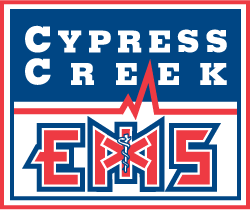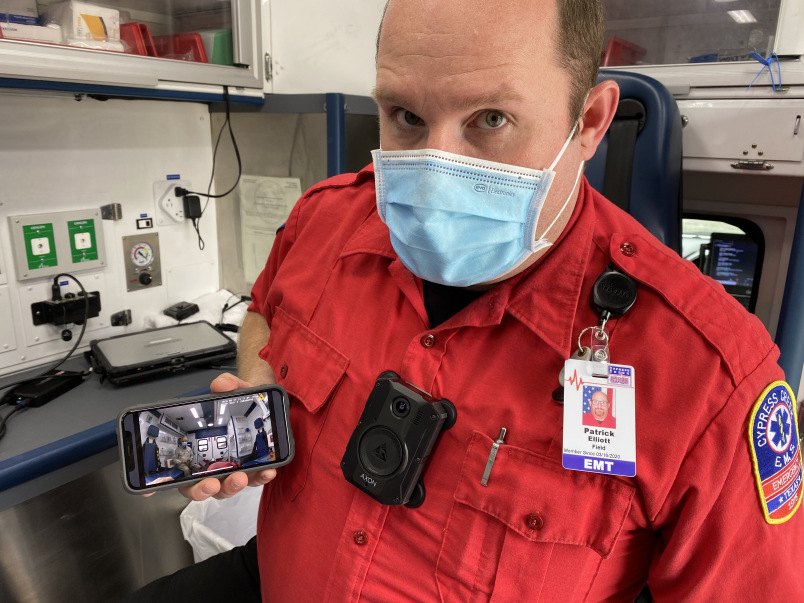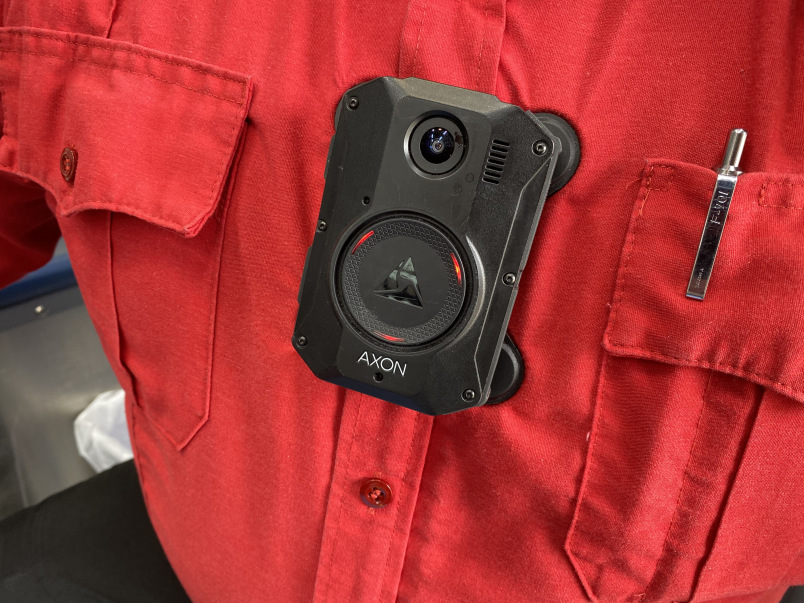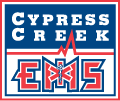With Cameras in EMS, Seeing is Believing
When Cypress Creek EMS became the first EMS system in the country to deploy the AXON Flex 2 POV (Point of View) cameras and AXON Fleet cameras to monitor driving and crew safety, they were Axon’s first choice to field test the Axon Body 3 (AB3) cameras with live streaming.
In an innovative program to assist first responders during disasters, AXON provided CCEMS with AB3 cameras to see if they would meet the needs of telemedicine. The Center for Medicare/Medicaid Services (CMS) expanded the use of telemedicine to all EMS Providers in response to COVID-19. CCEMS Interim CEO, Wren Nealy, saw this as a solution saying, “The Medics can use a camera and evidence management system they were already comfortable with to expand their patient care abilities. Giving doctors the ability to tap into a live stream of what is happening is like having the doctor on the scene.” They can see and hear everything, interacting with the patient using a cell phone.
NOTE: LISTEN TO EMS WORLD PODCASTS ON THE CCEMS CAMERA PROGRAM BELOW
It provides a telemedicine experience that is guiding the Paramedic in managing the patient’s needs through alternative methods. Not all patients need to go to a hospital emergency room especially when those facilities are overloaded as has been the case during the pandemic. Some patients can be taken to a freestanding ER or in minor cases advised to see their family doctor.
In adopting cameras, great care was taken to make sure it was not turned into some punitive, big brother system. If a skill needs work it leads to more training, not dismissal. The idea was to use the footage in what we call QA/QI or Quality Assurance/Quality Improvement. When the Axon Flex-2 cameras were deployed, it gave the medics the ability to review cases while preparing their reports while learning how to improve skills and customer service.
It also turned out to be an outstanding teaching tool for new hire academies. CCEMS Training Coordinator Zach Dunlap says, “It is great to be able to show trainees videos of our crews performing the pit crew model in cardiac arrest or whatever topic we are learning. We can show each person doing their individual job at a high level which in turn makes the team more effective in our care of the patient. Dunlap added that “I can tell you something all day but if I am not articulating it to where you understand it, there won’t be positive improvement. Once I show you what I am talking about, you see it for yourself.” In other words, seeing is believing.
Members of the most recent New Hire Academy had very positive things to say about the Axon system. EMT Karl Moore said, “I think the deployment and use of the Axon Video recording system is a broad new stroke in advancing clinical excellence and a teaching tool. I really look forward to the opportunity to use the Axon system to not only enhance my clinical knowledge/performance but also the patient interactions.”
EMT Fernando Perez also looked forward to using the system in the field. He said “This allows us to view the way we work on a scene and help us improve the crew as a whole. This is very important to always do better and this gives us the opportunity to improve on our skills. I think live streaming cameras will help in high-risk situations where we need to make rapid contact with a supervisor for advice.”
Training Coordinator Zach Dunlap likes to think of it in the same way a football team watches film of their games each week. Dunlap said, “They watch video of their upcoming opponent to understand tendencies, keys, best players, and how best to attack them. After each game, they review what went well and where they were deficient to prepare for the next game. It is the exact same scenario for us. We need to see ourselves in action to improve and be ready for the next one because there is always going to be a next one.”
Eventually, the live streaming cameras will allow emergency department doctors at the hospital to see the scene and the patient. Plus, dispatchers in the Comm Center can get a view of the scene to see what additional resources might be needed. In addition to those advantages, the videos also protect CCEMS personnel from false legal claims. And, especially in that type of situation seeing is believing.
Listen to EMS World Podcasts on setting up a camera program with CCEMS Acting CEO Wren Nealy and the Benefits of cameras with CCEMS Training Coordinator Zach Dunlap.
1. Benefits of Cameras – https://www.emsworld.com/podcast/1224681/body-cams-ems-providers-benefits
2. Setting up a Camera Program – https://www.emsworld.com/article/1224612/starting-ems-body-worn-camera-program
About Cypress Creek EMS
Cypress Creek EMS is a 501(c)(3) non-profit organization with 46 years of excellence in emergency services formerly provided within 177 square miles of northern Harris County and to approximately 560,000 residents. CCEMS now operates in eight counties across Texas with Creek GroundCare services and around the world with Creek AirCare. CCEMS is known nationally as an innovator in prehospital medicine. For example, CCEMS was the first civilian EMS in the country to transfuse whole blood into a trauma patient in the field. CCEMS is also part of a Military EMS Fellowship that is bringing battlefield medicine to civilian EMS to reduce deaths due to trauma.
###
Contact: Miranda Sevcik 713-515-9729







